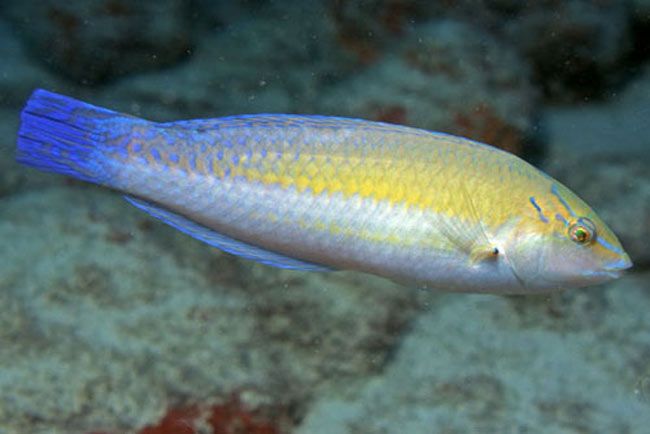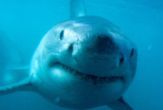Darwin Scores a Point in DNA Test of Fish

A new study of tropical reef fish calls into question a modern theory for how species develop and supports Darwin's original idea of ecology as the driving force of speciation.
Natural selection by itself can cause an advantageous gene - say a longer neck on a giraffe - to spread among interbreeding organisms. But in order for evolution to explain the emergence of two distinct species, some sort of "wedge" needs to exist that drives populations apart.
Darwin thought that the distinct survival pressures in different habitats were enough to cause new species to form. But in 1942, Ernst Mayr developed a theory that populations had to be isolated geographically - such as by a mountain range or a glacier - in order to form separate gene pools, where random genetic mutations would generate divergent species.
"People started to think that isolation is more important than natural selection in creating species," said Luiz Rocha from the Smithsonian Tropical Research Institute.
But Rocha and his colleagues have found that genetic differences in wrasses, a type of fish living in coral reefs, are best explained by the unique selection mechanisms of particular habitats, as opposed to some kind of physical barrier.
Sea of possibilities
The ocean, which has no mountain ranges or rivers, would seem a hard place to isolate populations.
Sign up for the Live Science daily newsletter now
Get the world’s most fascinating discoveries delivered straight to your inbox.
"There are not many clear barriers in the ocean, and yet there are plenty of distinct species," Rocha told LiveScience.
The wrasses, in particular, spend 30 days in a free-floating larval stage, which allows them to spread over a large region. However, where the Amazon River dumps into the Atlantic, the amount of sediment and freshwater is too much for coral reefs to form and fish larvae can't easily spread across this 1,200-mile gap.
Rocha's team decided to look at wrasses on both sides of this apparent barrier.
"Since all of these species have similar abilities to disperse, I expected to find genetic differences that corresponded to the barrier in all of them, but, surprisingly, that wasn't the case," Rocha said.
The DNA of wrasses living in different habitats separated by just 200 miles were more distinct than the DNA from wrasses with similar habitat-preference living more than 2,000 miles apart across the Amazon barrier.
Some of the wrasse species are specialists - they do best in a particular coral reef habitat. According to Rocha, the larvae of a specialist will easily travel 200 miles and wind up in a different habitat, but because of natural selection, "they will lose out to the locals," he said.
There have been other studies with lizards and freshwater fish that also support an ecological, or habitat-based, origin of species. But Rocha said the idea is still not well accepted. He thinks, in the end, a more comprehensive theory of speciation will be a mixture of both geographic and ecological speciation.
Researchers at Harvard University, the University of Florida and the University of Hawaii contributed to the study, which will be detailed in the journal Proceedings of the Royal Society B.
- The Top 10 Intelligent Designs (or Creation Myths)
- Top 10 Useless Limbs (and Other Vestigial Organs)
- Yes, Evolution is a Theory. It's Religion and Politics that are the Problems
- Scientists Find 178 New Species in Oceans
Glossary
Natural selection Survival of the fittest - the trend in a population toward traits/genes that provide a survival or reproductive advantage.
Species Group of interbreeding natural populations.
Speciation The production of new, reproductively isolated populations.
Ecological speciation Species form as certain populations adapt - through natural selection - to a specific environment, or niche.
Geographic speciation Species from when populations are physically isolated.
What's Left ... Top 10 Useless Limbs (and Other Vestigial Organs)
Image Gallery













